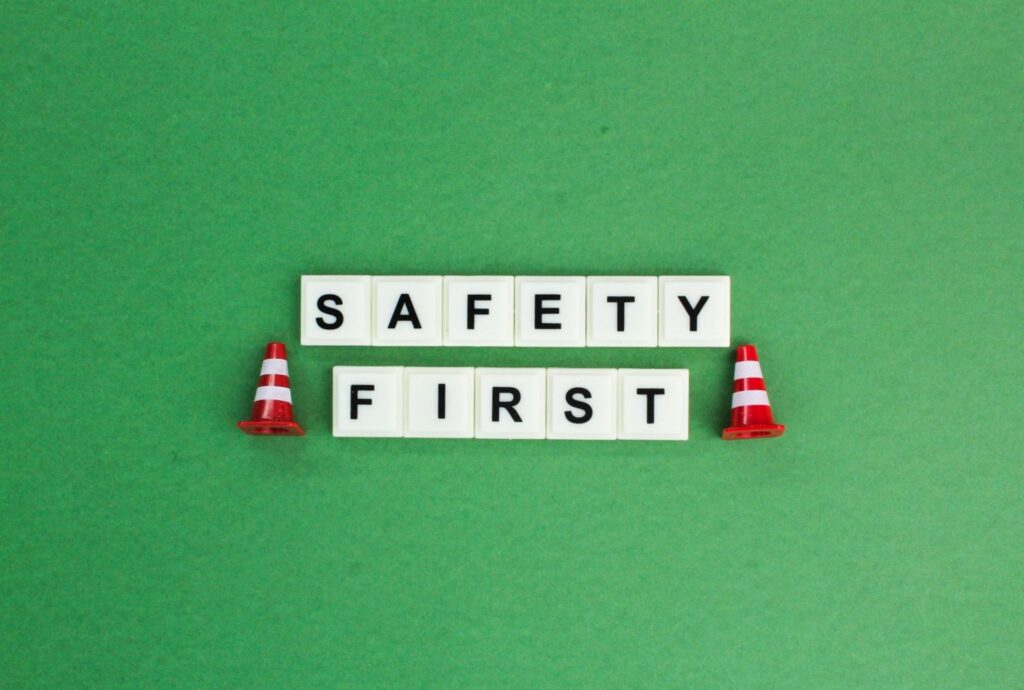Demolition work is the backbone of urban renewal and development. It clears outdated, unsafe, or unwanted structures, paving the way for innovation and modern infrastructure. From tiny homes to industrial complexes, demolition involves more than simple destruction. It requires careful planning, specialized tools, and skilled professionals to ensure safety and efficiency. Exploring what demolition entails reveals its benefits, processes, and challenges in building better and safer communities.
Understanding Demolition Work
Demolition refers to systematically dismantling buildings, structures, or infrastructure. Unlike reckless destruction, it is a controlled process guided by safety, legal, and environmental regulations. Professionals handle every phase with precision to ensure efficiency and minimal risk. It plays a key role in creating space for new development while addressing safety concerns and material reuse.
The Purpose Behind Demolition Work
Demolition serves various purposes, from removing unsafe structures to clearing space for modern development. Unstable or outdated buildings often pose risks to safety and usability. By dismantling these structures, communities can replace them with safer, more functional alternatives. The result is improved infrastructure that supports residential, commercial, and industrial growth.
The Steps Involved in Demolition
Every demolition project begins with planning and site evaluation. Engineers analyze the building’s structure, materials, and location to choose the most suitable methods. Permits and safety protocols are established to ensure legal and environmental compliance. Finally, specialized tools and techniques are used to dismantle the structure safely and effectively.
Tools and Techniques Used
Demolition requires a combination of manual and mechanical tools tailored to the project’s needs. Mechanical equipment like excavators, bulldozers, and wrecking balls efficiently handle large-scale demolitions. Explosive methods are reserved for complex, controlled implosions of massive structures. Smaller projects or selective demolitions rely on hand tools and precision machinery for accuracy and safety.
Safety as a Top Priority
Safety is at the heart of every demolition project. Teams follow strict protocols to protect workers, nearby residents, and the environment. Hazardous materials like asbestos or lead are carefully identified and removed. This focus on safety ensures the process is controlled and efficient and minimizes risks.
Key Benefits of Demolition Work
Demolition work significantly improves safety, environment, and community growth. It provides a clean slate for modern infrastructure while reducing hazards. These projects also offer opportunities for economic growth and sustainable practices. Each benefit reinforces the importance of professional demolition services:

Improved Safety and Modernization
Removing unsafe or unstable structures eliminates hazards and potential accidents. It clears the way for modern, safe buildings that meet current standards. By replacing aging infrastructure, communities benefit from safer homes, workplaces, and public spaces. Modernization supports a higher quality of life and improved aesthetics.
Environmental Sustainability in Demolition
Sustainability is a key focus in today’s demolition work. Materials like steel, wood, and concrete are carefully salvaged for recycling or reuse, reducing landfill waste, and preserving natural resources. Adopting eco-friendly practices aligns with global sustainability efforts.
Economic and Developmental Benefits
Demolition projects stimulate local economies by creating jobs and preparing sites for redevelopment. New buildings attract businesses, residents, and investors to revitalized areas. Infrastructure improvements boost community functionality and property values. These changes support long-term economic and social development.
Enhanced Community Aesthetics
Demolition removes old, decaying structures that diminish neighborhood appeal. Clean, cleared spaces create opportunities for modern and attractive developments. Communities benefit from increased property values and a sense of pride. Improved aesthetics inspire investment and growth in surrounding areas.
Types of Demolition Work
Various types of demolition work cater to different projects and challenges. Methods are chosen based on structure size, materials, and location. Whether dismantling tiny homes or large commercial buildings, each type requires planning and expertise. The right approach ensures safety, efficiency, and desired results:
Interior Demolition for Renovations
Interior demolition removes non-structural components like walls, ceilings, and fixtures. It is ideal for remodeling homes, offices, and commercial spaces. Professionals ensure load-bearing structures remain intact to avoid damage. This method allows for smooth renovations and functional improvements.
Selective and Deconstruction Methods
Selective demolition focuses on carefully dismantling parts of a structure. It preserves reusable materials like wood, metal, or brick. This eco-friendly approach minimizes waste and promotes recycling. Deconstruction methods often complement green building initiatives.
Industrial and Specialized Demolition
Industrial demolition addresses factories, plants, and extensive infrastructure. It requires advanced techniques and tools for handling hazardous materials and heavy equipment. Professionals also dismantle structures like bridges, smokestacks, and power plants. Each project follows strict safety guidelines to minimize risks.
Factors Influencing Demolition Work
Several factors affect how demolition projects are planned and executed. These include safety risks, environmental concerns, and structural complexities. Proper analysis of these factors ensures success and avoids costly setbacks. Professionals address each element with care to meet project goals:
Safety and Hazard Management
Demolition often involves hazardous materials like asbestos, lead, or unstable structures. Professionals conduct detailed risk assessments to manage potential dangers, and workers use protective equipment and techniques to ensure safety. Managing hazards is crucial to protecting people and the environment.
Environmental and Legal Compliance
Demolition generates significant debris that must be disposed of responsibly. To limit environmental harm, projects follow strict waste management and recycling laws. Permits and inspections are required to ensure legal compliance. Adhering to these regulations avoids delays and fines while protecting ecosystems.
Structural Complexity and Age
Older structures may have hidden weaknesses or hazardous materials. Newer buildings often use reinforced concrete or steel, requiring specialized equipment. Engineers analyze these factors to determine the most efficient demolition methods. Understanding structural complexities ensures safety and efficiency.
Project Scope and Site Conditions
The size and purpose of a project influence the demolition approach. Small residential demolitions differ significantly from industrial or high-rise projects. Site conditions like terrain, nearby structures, and weather can pose additional challenges. These variables require flexible plans and expert execution.
Challenges With Demolition Work
Demolition work is a complex process that comes with unique challenges. From safety concerns to environmental impact, professionals must anticipate and address issues. Managing these challenges demands expertise, adaptability, and careful planning. Overcoming obstacles ensures successful and safe project completion:
Structural and Material Challenges
Buildings often contain hidden weaknesses or reinforced materials that complicate demolition. Engineers must assess these structures to prevent sudden collapses. Advanced tools and techniques are used to overcome material challenges. Proper planning minimizes risks and ensures precision.
Timing and Cost Considerations
Unforeseen complications can delay demolition projects and increase costs. Structural surprises, weather, or permit issues often disrupt timelines. Professionals create detailed plans and remain agile to adjust as needed. Effective management keeps projects on schedule and within budget.
Environmental and Waste Management
Demolition generates large amounts of waste that must be handled properly. Materials like concrete, wood, and steel require sorting for recycling or disposal. Hazardous debris must follow strict regulations to avoid legal issues. Balancing waste management with environmental responsibility is critical.
Weather and Site Conditions
Unpredictable weather can delay outdoor demolition projects. Rain, wind, or extreme temperatures affect safety and equipment use. Site conditions like tight urban spaces or uneven terrain also pose logistical challenges. Adapting to these factors is essential to keep projects moving forward.
The Role of Technology in Demolition Work
Technology has revolutionized demolition work, making it safer, faster, and more precise. Advanced tools and innovations help professionals plan and execute projects efficiently while reducing risks. These technologies, from drones to robotics, ensure that demolition meets modern safety and environmental standards. Integrating technology enhances both large-scale projects and smaller, specialized tasks:
Drones for Site Analysis and Planning
Drones play a vital role in surveying demolition sites. They provide aerial views, enabling accurate assessments of structures and surroundings. High-resolution images and 3D mapping help engineers identify potential risks and plan accordingly. This technology saves time, enhances safety, and ensures precision before demolition begins.
Robotics for Hazardous Demolition Tasks
Robotics are increasingly used for demolishing structures in high-risk environments. Remote-controlled machines can safely dismantle buildings where human presence would be dangerous. These robots handle cutting, breaking, or drilling with precision and efficiency. By reducing direct human involvement, robotics minimize accidents and improve overall safety.
3D Scanning and Building Information Modeling (BIM)
3D scanning and Building Information Modeling (BIM) allow for a detailed analysis of structures before demolition. These tools create digital models that show a building’s layout, materials, and weak points. Engineers use this data to choose the most effective demolition methods. It also helps prevent unexpected issues during the process, saving time and resources.
Advanced Machinery and Equipment
Modern demolition relies on advanced machinery like hydraulic excavators, high-reach arms, and concrete crushers. These machines offer precision, power, and flexibility, adapting to the scale of each project. Innovations like electric and eco-friendly equipment reduce emissions and noise pollution. Such advancements align demolition work with modern environmental and efficiency standards.
Why Demolition Work Matters
Demolition work plays a critical role in shaping modern cities and communities. It clears the way for innovative developments while improving safety and aesthetics. Through careful execution, it transforms outdated spaces into opportunities for progress. The expertise involved ensures that every project contributes to long-term growth and sustainability.
Transform Communities Through Demolition Work
Demolition work is not the end of a structure—it is the beginning of something greater. It clears the way for modern, sustainable spaces where communities can grow and thrive. Every successful demolition project reflects a vision for progress, balancing safety, efficiency, and environmental responsibility. Whether you are planning to tear down an outdated building or reimagine an entire landscape, professional demolition is the first step toward transformation. Take that step with the confidence that you’re creating opportunities, revitalizing spaces, and building a stronger foundation for the future.
Discover how demolition shapes progress. Visit our MALC Rentals blog for more professional insights and industry knowledge!

